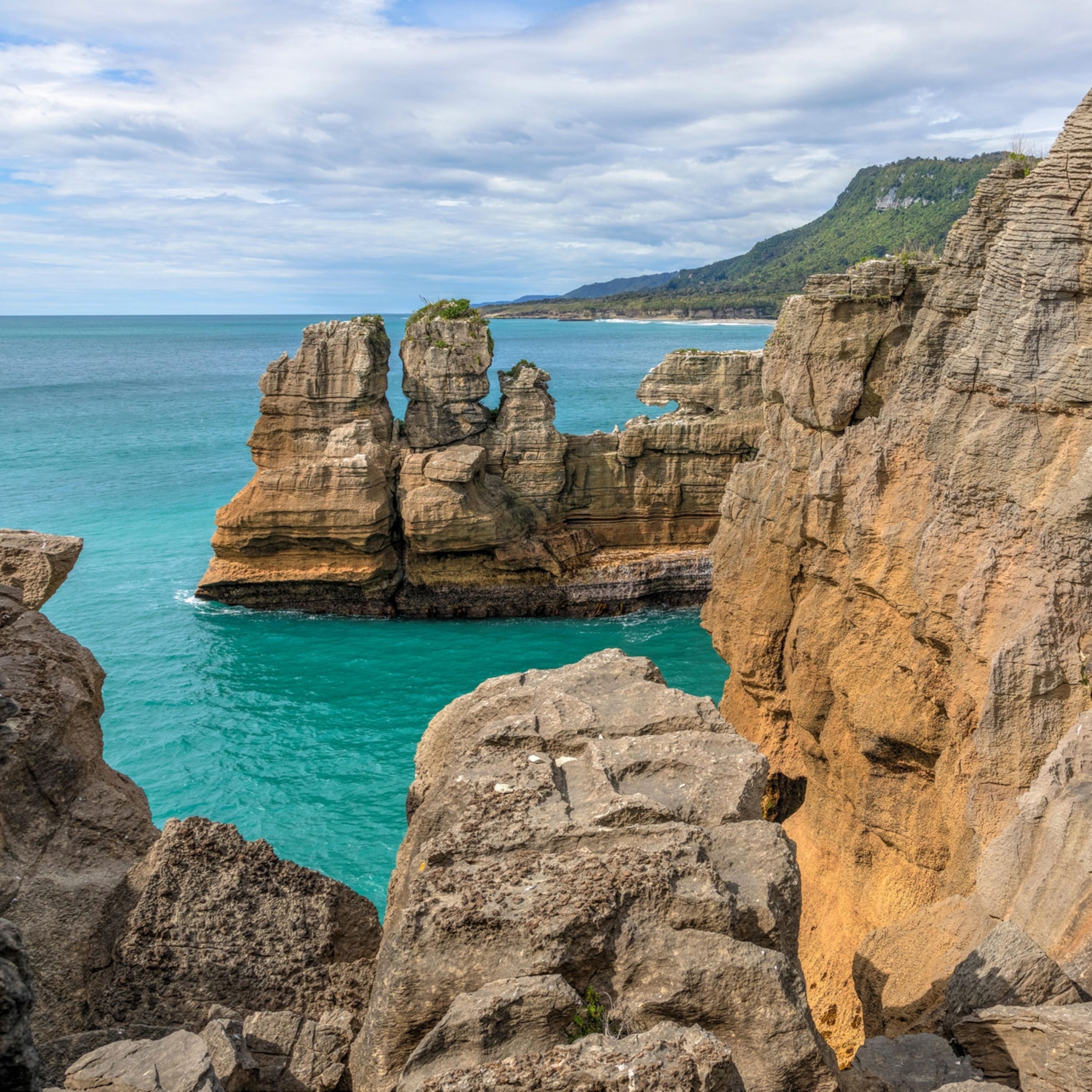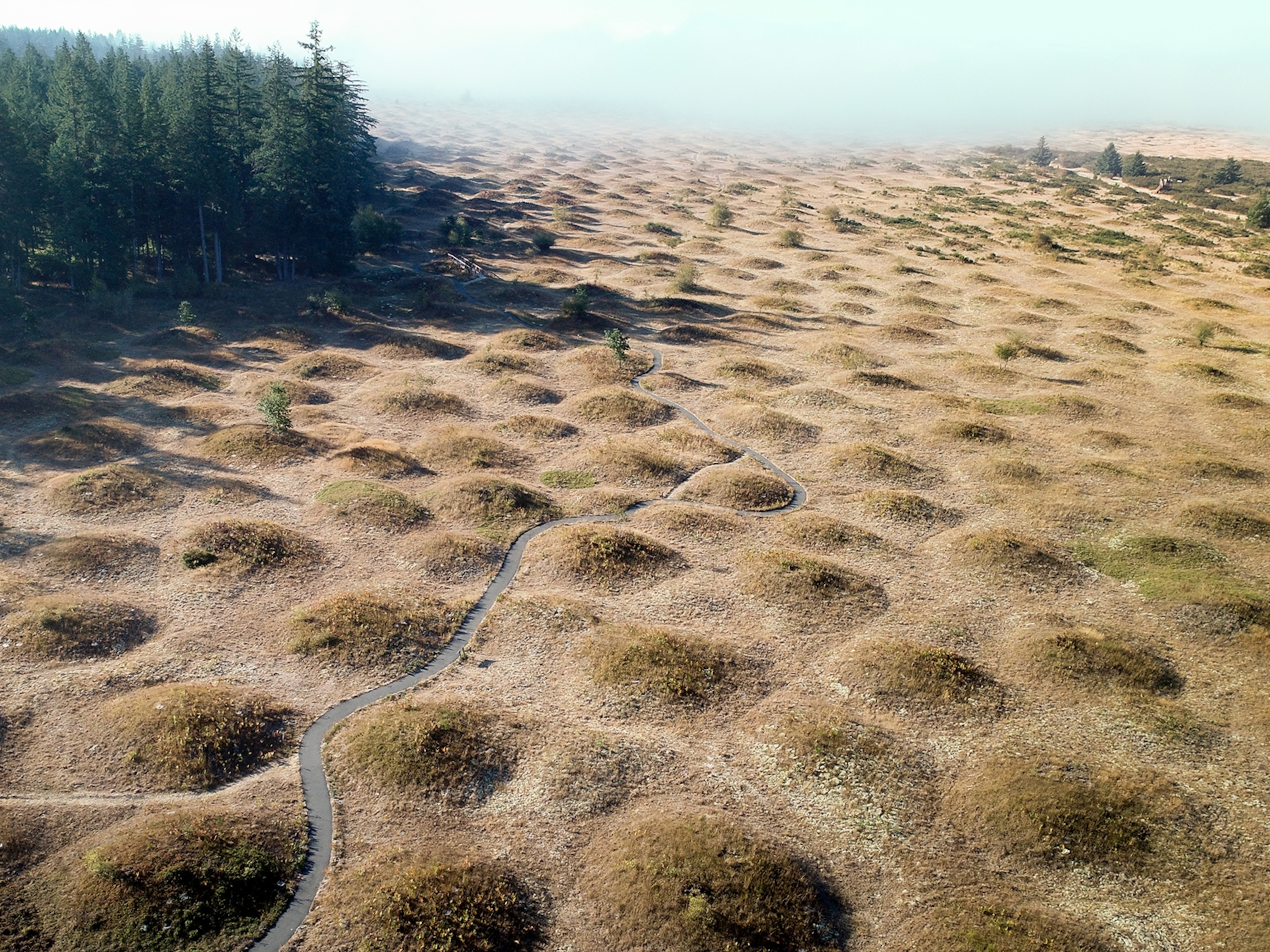Bizarre. Is that the right word for the Colorado Plateau, this thirsty sprawl of gaudy-hued stone festooned with such names as Hell Roaring Canyon, Scorpion Gulch, and Horsethief Point?
Edward Abbey began his classic Desert Solitaire with the simple "This is the most beautiful place on earth." Fiery rock can do that to a man. Others trying to understand the seductive pull of the plateau country apply adjectives like "amazing" and "awesome." Which aren't incorrect, merely inadequate. In truth, a single adjective may not suffice. All the same, as I fly over the plateau on a May morning, looking down on whalebacks of slickrock, on crashing waves of rock, on minarets and pyramids of rock hewn by water and wind—how could any word fit better than "bizarre"? Especially in Utah, the bizarrest precinct of this Great State of Rock, which is almost as big as three Ohios and sprawls into Arizona, New Mexico, and Colorado.
Desert this is, but water's tattoo is everywhere. Spidery little arroyos coalesce into bigger arroyos that plunge into the still deeper groove of a river, maybe into the thousand-foot-deep (305-meter-deep) canyon of the Escalante, a scalpel—cut in red rock, so narrow that the stream and its fringe of willows and tamarisks are invisible unless you're dead-on overhead.
Most of the collected runoff, if it hasn't vaporized or died in a mudflat, swells the Colorado River. By the time the river courses into Arizona and roars into the plateau country's most dazzling feature, the Grand Canyon, it is plowing a furrow more than a mile deep. Pretty impressive digging, this, considering that the precipitation in parts of the plateau averages only six inches (15 centimeters) a year.
Water was also present at the creation, in far greater abundance. Tens of millions of years ago, seas, swamps, and rivers deposited dozens of layers of rock: limestones, mudstones, shales, many reddened by traces of iron. In those eons the plateau country was flat and much lower than its heights today, which are typically 5,000 feet (1,524 meters) above sea level. Winds also contributed raw material, the makings of sandstone layers hundreds of feet thick. The whole shebang was thrust upward by forces within the Earth. Colliding tectonic plates tilted and bent layers like cardboard. Omnipotent then as now, water attacked the soft stones, carving canyons. That's Plateau Geology 101, slightly abbreviated.
Winging 2,500 feet (762 meters) over this rockscape, I feel a tenuous kinship with John Wesley Powell. On his scary hundred-day journey down the Green and Colorado Rivers in 1869, that indefatigable adventurer-scientist surmounted cliff tops to reconnoiter the uncharted territory he had penetrated. Of course, I'm riding shotgun in a Cessna while Powell had to pull himself up onearmed from a riverine chasm to a lookout; he lost his right arm at Shiloh in the Civil War. But we gaped at the same sights. "The landscape everywhere . . .," he wrote, "is of rock—cliffs of rock, tables of rock, plateaus of rock, crags of rock—ten thousand strangely carved forms."
Clearly Powell was awed by the fantastical convolutions of this land. He became the chief expositor of the "plateau province," as he called it, documenting not only the geology but also the ways and lineages of its Indians, meanwhile campaigning for sensible husbanding of the water.
Powell hadn't glimpsed some of the craziest rock shapes—the pinnacle-like hoodoos of Bryce Canyon or the vaulting spans of Arches, canonized by Edward Abbey. Bryce and Arches are two of the roughly 30 parks and other national preserves that make the heart of the province one of the nation's most protected regions. It isn't perfect protection; environmentalists decry its insufficiencies while locals, ingrained with the Westerner's mistrust of bureaucracy, grumble about overkill. In the largest unit, the 1.9-million-acre (7,689-square-kilometer) national monument Grand Staircase-Escalante, created only in 1996, off-road vehicles plow tracks that won't disappear for decades. On the other hand many mining claims have been relinquished or bought out by those devious Feds, and no new claims are permitted. And while allowing multiple uses, including ranching (yes, there's a little grass here and there), the Bureau of Land Management is charged with superintending the monument, to protect its attributes.
Gaudy vistas are only one of those attributes. The plateau is a time machine nonpareil, holding who knows what secrets. When the rocks at the bottom of the Grand Canyon are counted in, the swath of Earth's history exposed by water's relentless gouging of the plateau is reckoned by geologists to reach back 1.7 billion years, more than a third of Earth's existence.
One afternoon, puffing along behind Alan Titus, a BLM paleontologist, I dropped back a mere 75 million years or so. Titus assured me we were tramping through a swamp where ferns and magnolias had flourished, although it looked awfully like a forest of stunted pinons and junipers. "The whistles and shrieks you hear are not birds," Titus said, coaxing my imagination into play. "They're dinosaurs." Soon he had me seeing huge crocodiles and snakes sloshing lazily in warm pools. And then, guiding me to a row of dark, roundish objects half-buried in the soil, Titus said: "You're looking at the remains of an animal that's been extinct for 65 million years or more"—the fossilized vertebrae of a duck-billed dinosaur that lived in the Cretaceous period. Titus says this specimen was 25 feet (7.6 meters) long. "I'm waiting for that big tyrannosaur," he said. "I want to find one before I retire."
On another afternoon I climbed to a high cliff's edge. The setting sun infused the rocky layers vaulting away to the horizon with a crimson incandescence—the kind of glow, surely, that compelled Edward Abbey to pronounce these rocks beautiful. A hot, dry wind came up, gusting stronger and stronger, and as it assaulted the cliff faces it whined and screamed.
Sounded just like dinosaur shrieks.
Extras: See photos, field notes, and more from this National Geographic article.
Related Topics
You May Also Like
Go Further
Animals
- Octopuses have a lot of secrets. Can you guess 8 of them?
- Animals
- Feature
Octopuses have a lot of secrets. Can you guess 8 of them? - This biologist and her rescue dog help protect bears in the AndesThis biologist and her rescue dog help protect bears in the Andes
- An octopus invited this writer into her tank—and her secret worldAn octopus invited this writer into her tank—and her secret world
- Peace-loving bonobos are more aggressive than we thoughtPeace-loving bonobos are more aggressive than we thought
Environment
- This ancient society tried to stop El Niño—with child sacrificeThis ancient society tried to stop El Niño—with child sacrifice
- U.S. plans to clean its drinking water. What does that mean?U.S. plans to clean its drinking water. What does that mean?
- Food systems: supporting the triangle of food security, Video Story
- Paid Content
Food systems: supporting the triangle of food security - Will we ever solve the mystery of the Mima mounds?Will we ever solve the mystery of the Mima mounds?
- Are synthetic diamonds really better for the planet?Are synthetic diamonds really better for the planet?
- This year's cherry blossom peak bloom was a warning signThis year's cherry blossom peak bloom was a warning sign
History & Culture
- Strange clues in a Maya temple reveal a fiery political dramaStrange clues in a Maya temple reveal a fiery political drama
- How technology is revealing secrets in these ancient scrollsHow technology is revealing secrets in these ancient scrolls
- Pilgrimages aren’t just spiritual anymore. They’re a workout.Pilgrimages aren’t just spiritual anymore. They’re a workout.
- This ancient society tried to stop El Niño—with child sacrificeThis ancient society tried to stop El Niño—with child sacrifice
- This ancient cure was just revived in a lab. Does it work?This ancient cure was just revived in a lab. Does it work?
- See how ancient Indigenous artists left their markSee how ancient Indigenous artists left their mark
Science
- Jupiter’s volcanic moon Io has been erupting for billions of yearsJupiter’s volcanic moon Io has been erupting for billions of years
- This 80-foot-long sea monster was the killer whale of its timeThis 80-foot-long sea monster was the killer whale of its time
- Every 80 years, this star appears in the sky—and it’s almost timeEvery 80 years, this star appears in the sky—and it’s almost time
- How do you create your own ‘Blue Zone’? Here are 6 tipsHow do you create your own ‘Blue Zone’? Here are 6 tips
- Why outdoor adventure is important for women as they ageWhy outdoor adventure is important for women as they age
Travel
- This royal city lies in the shadow of Kuala LumpurThis royal city lies in the shadow of Kuala Lumpur
- This author tells the story of crypto-trading Mongolian nomadsThis author tells the story of crypto-trading Mongolian nomads
- Slow-roasted meats and fluffy dumplings in the Czech capitalSlow-roasted meats and fluffy dumplings in the Czech capital








